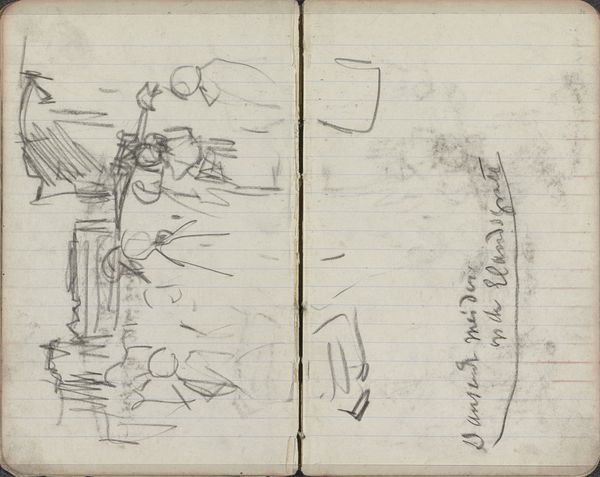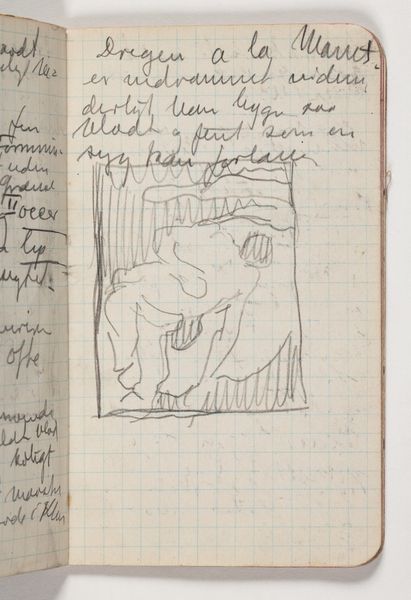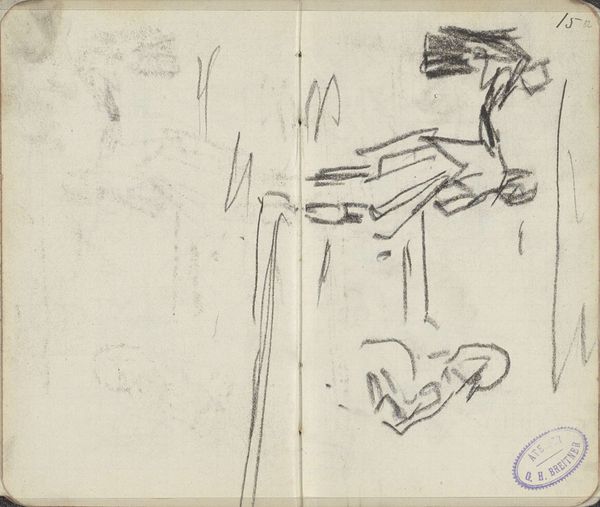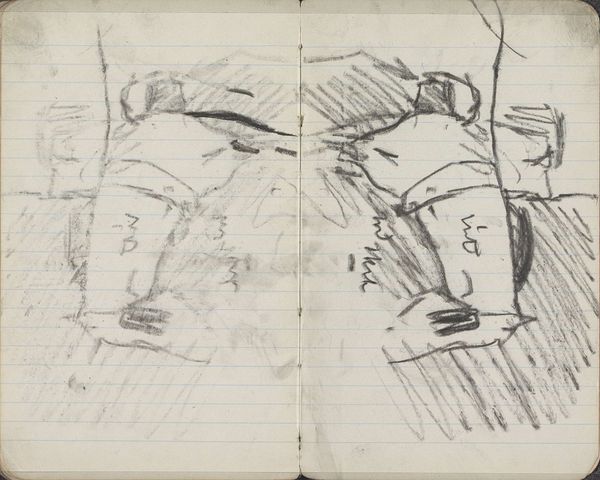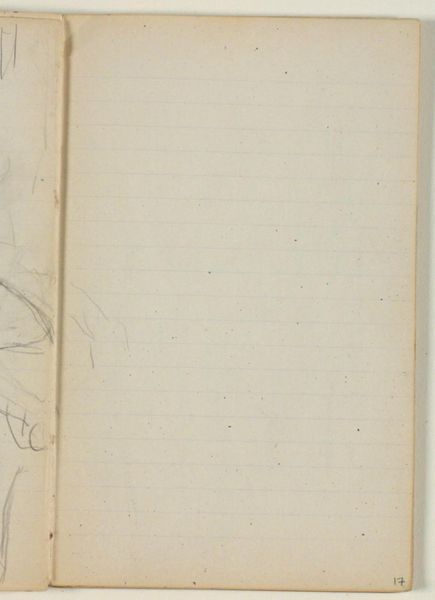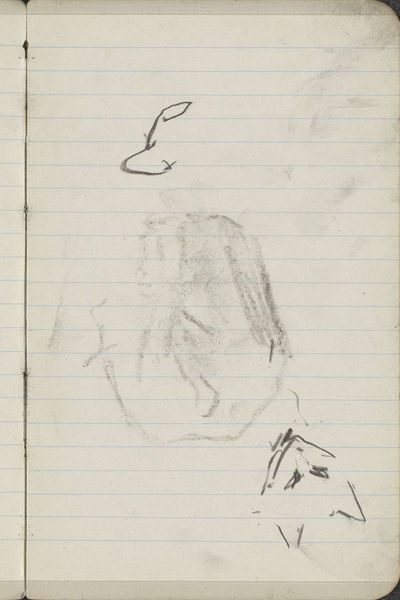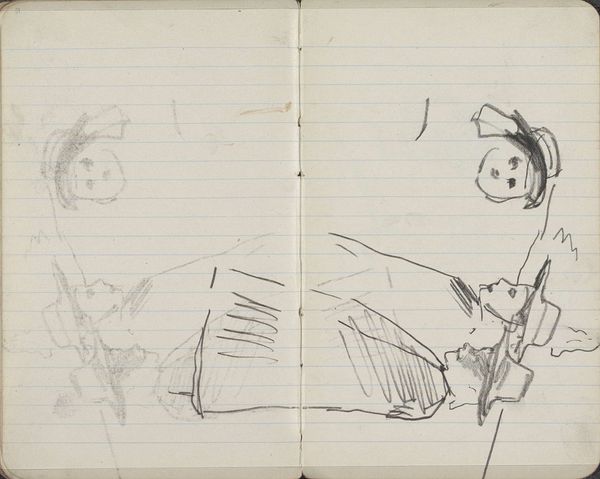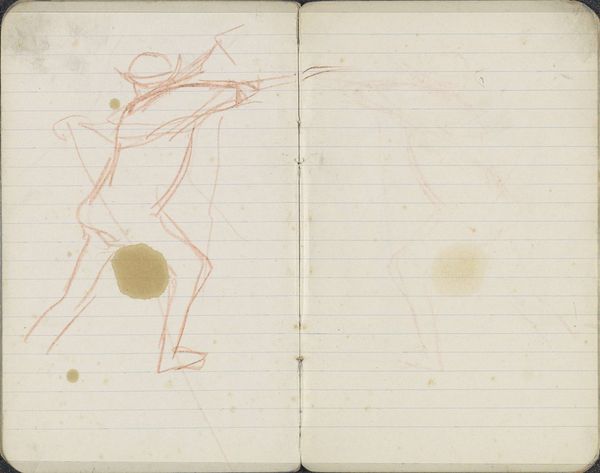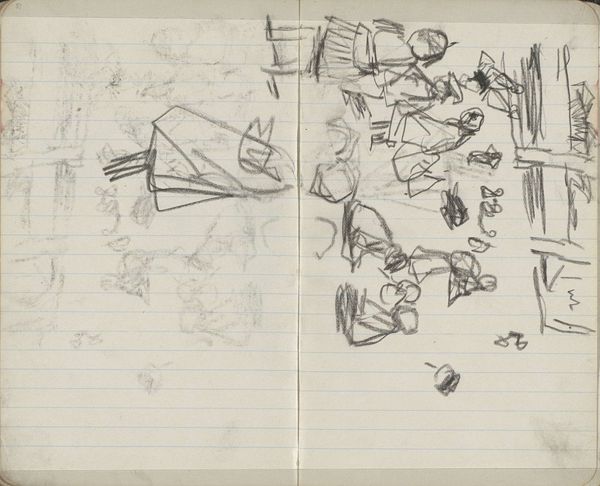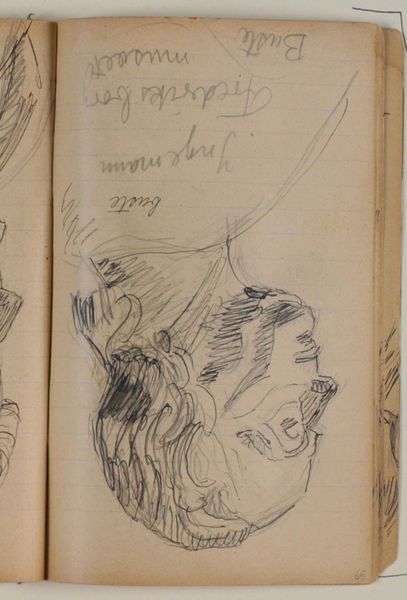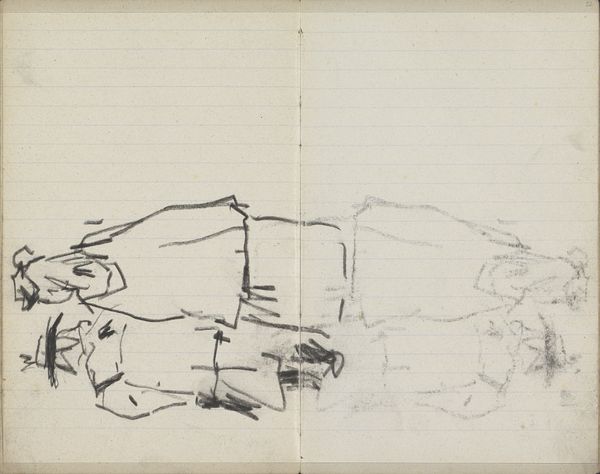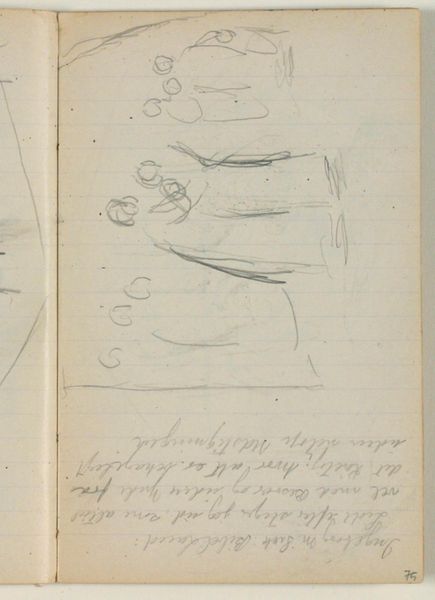
Vrouwen bij een kraam met sinaasappels op de Dam te Amsterdam 1893
0:00
0:00
georgehendrikbreitner
Rijksmuseum
Copyright: Rijks Museum: Open Domain
Editor: This quick sketch by George Hendrik Breitner, dating back to 1893, is titled "Vrouwen bij een kraam met sinaasappels op de Dam te Amsterdam." It seems like a fleeting moment captured in pencil and ink. What stands out to you about this work? Curator: The drawing's power lies in its immediacy. As a historian, I’m drawn to understanding how artists represented modern life. Breitner wasn’t just capturing the scene; he was engaging with the visual culture of Amsterdam and rapidly changing social dynamics of the 1890s. Notice how his technique – the rapid lines, the impressionistic rendering – conveys the energy of the Dam. This location, traditionally a city centre of trade, is presented as an ever evolving and fleeting place of work. Editor: It really does feel like a snapshot! But what was Breitner trying to say about the "women"? Was he advocating or documenting their newfound independence? Curator: It’s a vital question. While we might interpret it through a modern lens of social progress, we must be cautious of projecting. Breitner, part of the Amsterdam Impressionism movement, focused on depicting the reality of everyday life. Think of Émile Zola, for instance; these artists often aimed for realism, but their choice of subject –the working class, the urban scene – inherently involved them in social discourse. The rise of public parks, open marketplaces, and even a newspaper market served as the setting for class interactions. Editor: So the sketch reflects more of an observation than an endorsement? Curator: Precisely. It’s a moment observed and rendered with the visual language of Impressionism which at the time, itself, was quite progressive. And by the way, this is located in a personal sketchbook. Editor: Fascinating! It completely shifts my perception knowing it’s not just a scene, but a glimpse into the visual culture that influenced his perspective. Curator: Exactly. Understanding that is critical to understanding the role art plays in public life and our own, constantly shifting social values.
Comments
No comments
Be the first to comment and join the conversation on the ultimate creative platform.
